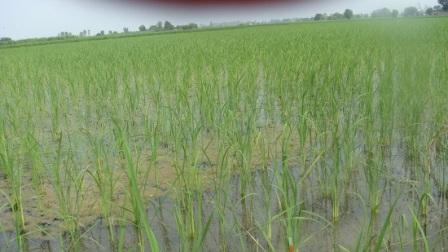/topics/food-and-nutrition
Food and Nutrition
Mitigating climate change through organic agriculture - Keynote address at the Third Organic Farming Association of India Convention, held at Anand, Gujarat (2010)
Posted on 25 Dec, 2010 10:43 PMGreen Revolution (GR) technologies, supported by official policies, and fuelled by agro-chemicals, machinery and irrigation, are well known to have improved agricultural production and productivity. While these technologies greatly helped developing countries to address their food-security and food-sovereignty needs, farmers using these technologies have had to depend on external inputs.
Saving rice - Ambitious plans to increase productivity
Posted on 24 Dec, 2010 10:13 AMEnormous funds are being poured into research aimed at improving seed varieties, with a heavy focus on developing hybrid rice. Is it the right option for millions of small rice farmers who are already battling high input costs and increasingly unpredictable weather? Or does part of the solution lie in efficient methods of cultivation that will cut down water use and improve yield?
Rice intensification for increasing productivity in Koraput, Odisha
Posted on 24 Dec, 2010 10:12 AM
Photo: Muralidhar Adhikari
Water footprint assessments of dehydrated onion products of Jain Irrigation Systems Ltd – A report by IFC
Posted on 17 Dec, 2010 07:05 PMThis work on water footprint assessments represents a pioneering effort on documenting the water consumption in Jain Irrigation Systems Limited’s (JISL) production of dehydrated onions and of micro-irrigation systems. It also assesses the sustainability of this water consumption and formulate response strategies.
International Symposium on “System Intensification towards Food & Environmental Security”, CWSS, BCKV, Nadia, West Bengal
Posted on 10 Dec, 2010 05:17 PM 
e-Disha November 2010 newsletter from Consortium for DEWATS Dissemination Society (CDD)
Posted on 29 Nov, 2010 10:59 AMArticle and Image Courtesy: Consortium for DEWATS Dissemination Society

The November edition of e-Disha published by the Consortium of DEWATS Dissemination Society (CDD) has the following highlights:
Direct seeding of rice A simple solution to India s water crisis?
Posted on 26 Nov, 2010 11:57 AMIn partnership with the Columbia Water Center, researchers from Punjab Agricultural University have initiated a multi-year project to implement and field-test diverse water-saving technologies, practices and policies aimed at reducing agricultural water use in the state of Punjab, particularly among rice farmers. In last year’s trial, the most successful project involved the installation of inexpensive tensiometers in the fields of over 500 farmers, yielding water savings of 30-35 percent.
Concurrently with the tensiometer trials, the team also recruited a smaller number of farmers to adopt a different way of cultivating rice altogether: Direct seeding of rice.
In traditional rice cultivation, rice is sprouted in a nursery; sprouted seedlings are then transplanted into standing water. With direct seeding, rice seed is sown and sprouted directly into the field, eliminating the laborious process of planting seedlings by hand and greatly reducing the crop’s water requirements.
 Conventional rice production requires standing water
Conventional rice production requires standing water
Enhancing crop water productivity to ameliorate groundwater decline - Article from Current Science
Posted on 15 Nov, 2010 10:55 PMThe following article is a literature survey of water management interventions taken up in Indian fields to improve the water productivity which would in turn reduce the groundwater decline.
News roundup (22 - 31 October 2010) :" India: Land of many cell phones, but fewer toilets"
Posted on 03 Nov, 2010 08:50 AMWastewater/Sanitation
Mitigating the potential unintended impacts of water harvesting - A WHiRL Research Report
Posted on 20 Oct, 2010 07:28 AMThis report under the WHiRL research project by the Natural Resources Institute (NRI) identifies the potential unintended impacts of water harvesting so that, if at all possible they are avoided altogether, but if these do occur, they are recognised at an early stage and steps are taken to mitigate their affects. It highlights evidence that is emerging about water harvesting in semi-arid areas, on how water if used inappropriately, can lead to inequitable access to water resources and, in the extreme, to unreliable drinking water supplies.



